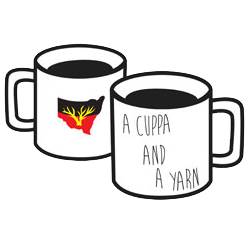
31 March, 2020
It’s being called a pandemic that’s changing the world.
The deadly coronavirus that causes the disease COVID-19 has raced across the globe in a few short months, infecting more than 783,171 people and killing 37,743 (as of Tuesday 31 March 2020). This is a public health crisis that will not be solved by NSWALC or its limited resources.
In Australia, more than 4,457 people are known to have the virus and 19 people have died because of it.
This coronavirus doesn’t spare anyone – rich or poor, city or remote – it’s highly infectious, makes people quite unwell and is deadly for particular groups of people.
According the National Aboriginal Community Controlled Health Organisation (NACCHO), First Nations people are 8.5 times more likely to be hospitalised during a virus outbreak.
This is amplified by statistics from the Royal Australian College of General practitioners which reveal that 46 % of Aboriginal and Torres Strait Islander people have one or more chronic conditions that pose significant health problems.
“We know from past experience and the current circumstances of many of our families that Aboriginal people are at greater risk from COVID 19 than the general population,” NSWALC Chairperson Cr Anne Dennis said
“That’s why it’s vital that all of us in the Land Rights movement do everything in our power to help stop the spread of COVID 19.”
The COVID-19 pandemic is so serious, the Australian Medical Association has called on National Cabinet to urgently fund and resource Aboriginal and Torres Strait Islander health services.
There are 120 Local Aboriginal Land Councils (LALCs) spread across NSW. 63 discrete Aboriginal communities reside within LALC boundaries. Many are regional and some are remote.
NSWALC CEO James Christian said discrete communities face additional pressure over access to medical assistance, food security, transport, social distancing and how to quarantine people who contract the virus.
“NSWALC is not the lead or expert body on this public health threat but we are working with governments, Aboriginal community-controlled organisations, Aboriginal Medical Services and the Land Rights network to coordinate responses to assist communities with information, necessary resources, equipment, supplies and support,” Mr Christian said.
“It would be neither appropriate or possible for NSWALC to lead the responses and resource all the needs of community during this pandemic, so this is very much a combined and collegiate approach.”
NSWALC is in the process of securing limited access to some personal hygiene products and staple foods which it will be making available to our elderly and frail Aboriginal community members.
NSWALC has already sent a toolkit to all LALCS to help them assess their staff and community situations, put plans in place, and know where to go for help.
To download the toolkit and information flyers from the NSW Government Centre for Aboriginal Health, click on the links below:
- NSW Aboriginal Land Council Toolkit:
- NSW Government Centre for Aboriginal Health:
It includes information like how this coronavirus spreads, the known symptoms, how to practise social distancing within communities, the importance of personal hygiene in slowing disease spread, caring for Elders and children, and how to isolate.
The COVID-19 emergency is posing major challenges across the country. Individuals, community organisations, health services and governments need to actively support those most at risk and work together to reduce the COVID-19 impact on Aboriginal communities.

